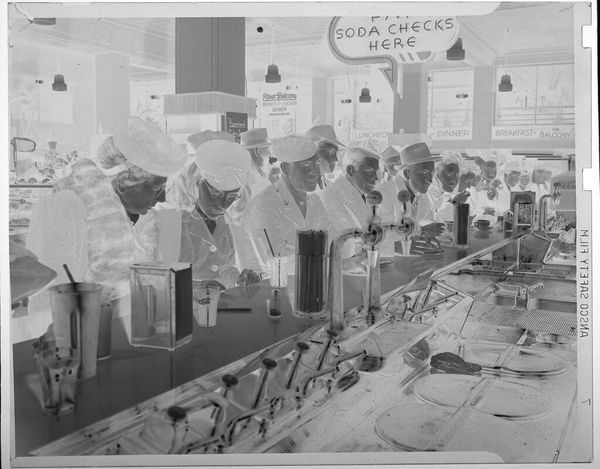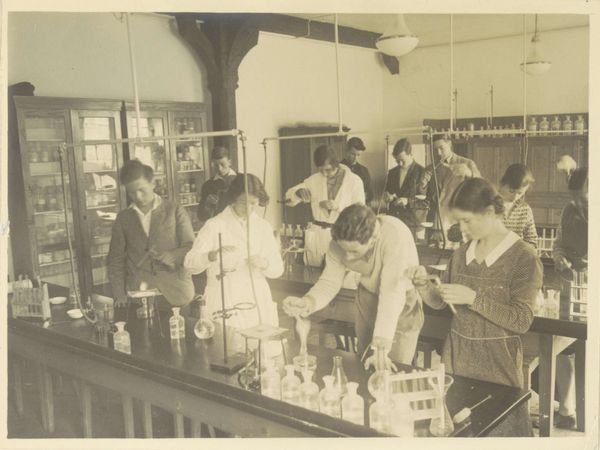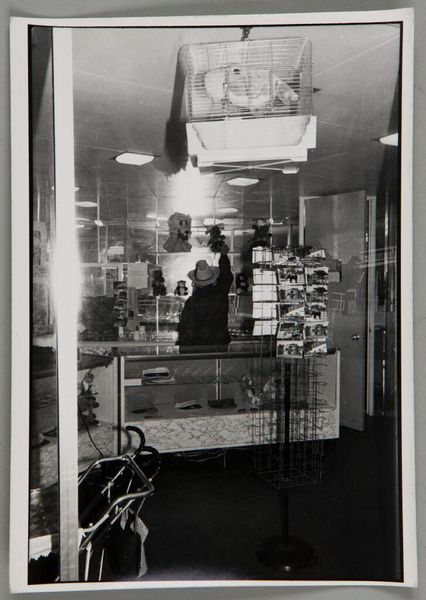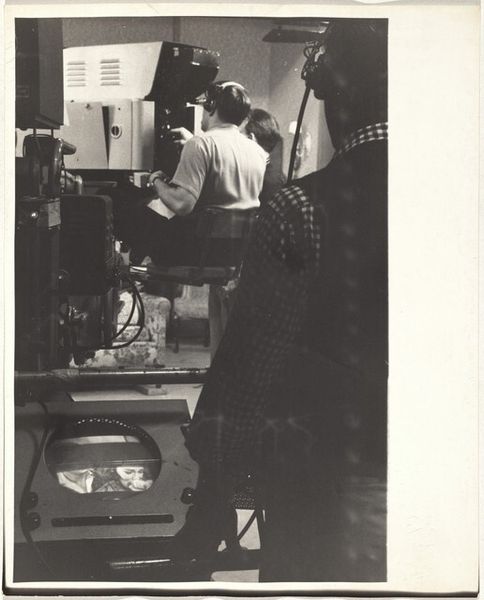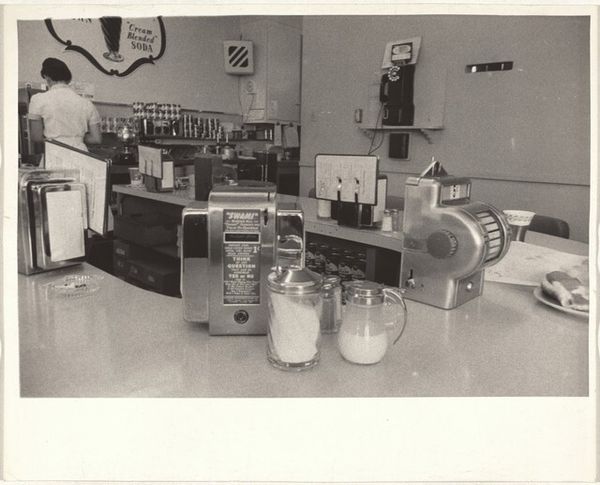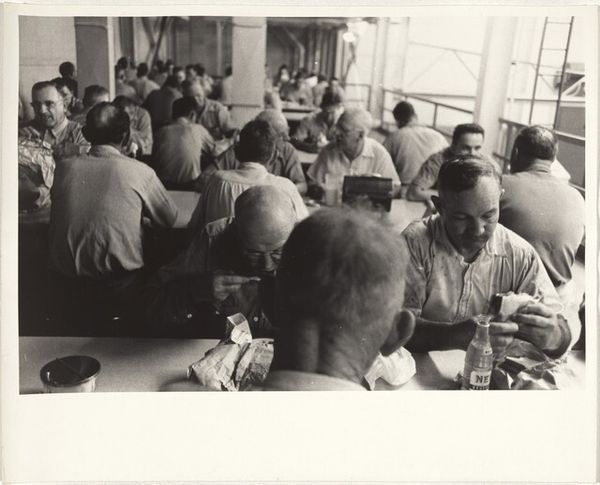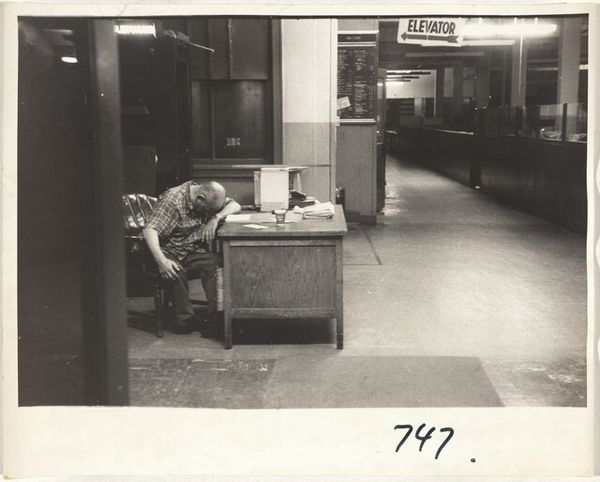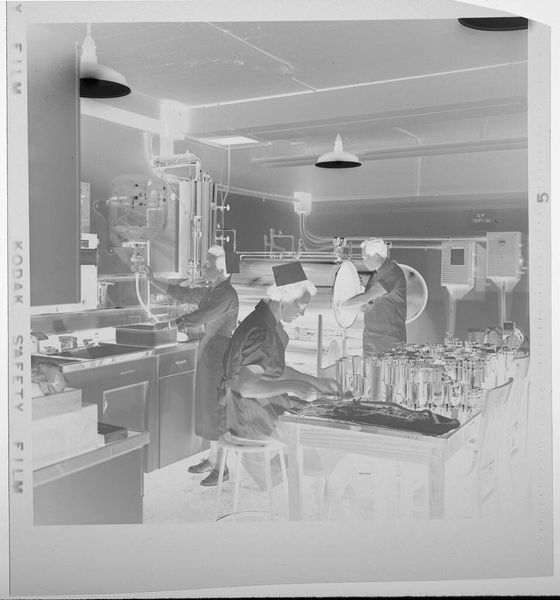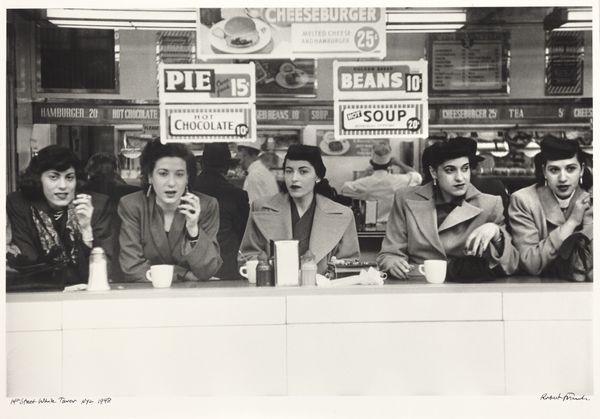
photography, gelatin-silver-print
#
portrait
#
archive photography
#
street-photography
#
photography
#
historical photography
#
gelatin-silver-print
#
monochrome photography
#
ashcan-school
#
realism
#
monochrome
Dimensions: sheet: 50.8 x 40.4 cm (20 x 15 7/8 in.)
Copyright: National Gallery of Art: CC0 1.0
Editor: So, this gelatin-silver print, "Drug store—Detroit" by Robert Frank, captured in 1955… the composition is quite striking, leading the eye right down the counter. It feels almost like a snapshot of American social life at the time, but tinged with… what, exactly? What do you see in this piece? Curator: Frank's work always cuts deeper than a simple snapshot. The segregated diner is central. Can you see it? The line of white men at the counter, and the Black women standing, separated in the back. He’s not just showing us a drugstore; he’s revealing the power dynamics of 1950s America, the subtle but pervasive segregation. What does that contrast between the served and the unserved communicate to you? Editor: I see it now – the separation is undeniable. So the “Orange Whip 10¢” signs, almost celebratory, become ironic, even critical? Curator: Exactly! Frank uses the visual language of advertising, the allure of consumerism, to highlight the hypocrisy of the American Dream. Whose dream is it, really? He's using his lens as a tool of social critique, challenging us to confront uncomfortable truths about race, class, and power. Think about how contemporary movements like Black Lives Matter would interpret this. Does the photograph’s message resonate differently now? Editor: Absolutely. It's a powerful reminder that those inequalities, though perhaps less overt, still exist. It's amazing how a single image can spark such important reflections. Curator: Indeed. Frank invites us to look beyond the surface and grapple with the complexities of our shared history, and the work still left to be done. A crucial image for critical dialogue, even today.
Comments
No comments
Be the first to comment and join the conversation on the ultimate creative platform.

